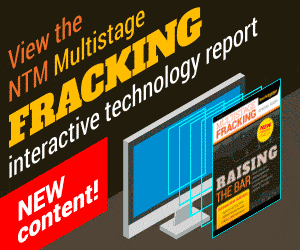High Impact: Viewed as not entirely mature, production asset optimization still favoured as a good investment
- Published: Thursday, 15 October 2015
- Author: Daily News
In the first quarter, Cenovus Energy Inc. cut oilsands operating expenses $5 per bbl, or 31 per cent compared with the same period in 2014. While lower natural gas and supplier costs helped, it also credited production asset optimization for the significant decrease.
“Non-fuel per-unit operating costs declined primarily as a result of stronger production and high plant operating efficiencies. The company’s efforts to improve productivity and further prioritize work also contributed to the decrease,” the company stated in April.
“For example, savings were achieved by reducing workover costs and lowering fluid, waste handling and trucking costs related to the optimization of the chemical application process. Lower repair and maintenance costs resulting from improved scheduling of less time-sensitive work also contributed to the savings.”
The company also plans to take advantage of the slower pace of development to optimize its engineering and execution strategy with a focus on achieving the lowest capital efficiencies for its Narrows Lake oilsands project.
“We’ve made progress in significantly reducing our operating costs, and further cost-cutting measures are underway. We expect many of these savings to be sustainable and to make our oilsands assets even more efficient and productive,” commented John Brannan, executive vice-president and chief operating officer.
As the oil and gas industry copes with the low price environment that is now forecast to be lower and longer than originally anticipated, such asset optimization is becoming a must. There are many technologies available to optimize production—some low-tech and some so high-tech they are not yet market ready—but all are recognized as important to a company’s bottom line in these cost-conscious times.
This was borne out in a survey of Canadian oil and gas industry professionals for their views about the digital oilfield recently conducted by JuneWarren-Nickle’s Energy Group, GE and Accenture. Survey respondents ranked production asset optimization third overall of 10 digital oilfield use cases, and first for perceived return on investment, indicating its ability to have an impact on costs—a high priority in a low commodity price environment.
Where it ranked lower, however, was in technological maturity and the readiness of companies to adopt the technology, a sign that some of the high-tech aspects of production asset optimization may not be ready for implementation in the minds of many executives.
In many cases, those technologies start with increasingly sophisticated and ubiquitous sensors that can be found in every corner of the industrial environment collecting massive volumes of data. Ever smaller and cheaper microsensors, such as the micro-electro-mechanical systems (MEMS) technology commonly used in smartphones, has enabled wide-spread use of sensors to become the eyes and ears of industrial equipment.
More computing power, both in the sensors and in the cloud, interconnectivity to gather the data in real time, and analytics to turn that data into insight have become powerful tools enabling production asset optimization—which ultimately leads to actionable information that gives companies the ability to make intelligent decisions to improve operations and performance.
Production asset optimization can also assist in enabling other digital oilfield applications, such as predictive maintenance, remote asset operations and field productivity. It can optimize scheduling and debottlenecking activities and lead to various process improvements. Its relatively slow uptake into the oil and gas industry may in part relate to the heterogeneous nature of assets in the sector, where implementation is of a more unique nature for each facility compared to sectors like manufacturing and services.
As would be expected, companies with large fixed assets, such as mining and in situ oilsands facilities, pipelines and upgraders and refineries stand to benefit the most from such technology and, of those surveyed, those industry verticals showed the most interest in this use case. As Cenovus has made clear, significant gains are achievable when investing in production asset optimization.
To learn more about digital oil, plan to attend the Canadian Energy Technology Forum (CETF), a unique industry event that explores the technological and operational foundation of the digital oilfield. The forum features innovation leaders who have increased revenue, improved operating margins and enhanced asset efficiencies by leveraging digital oilfield technology. CETF takes place October 27 at the BMO Centre in Calgary. Visit energytechforum.ca for more information.
-NTM-



